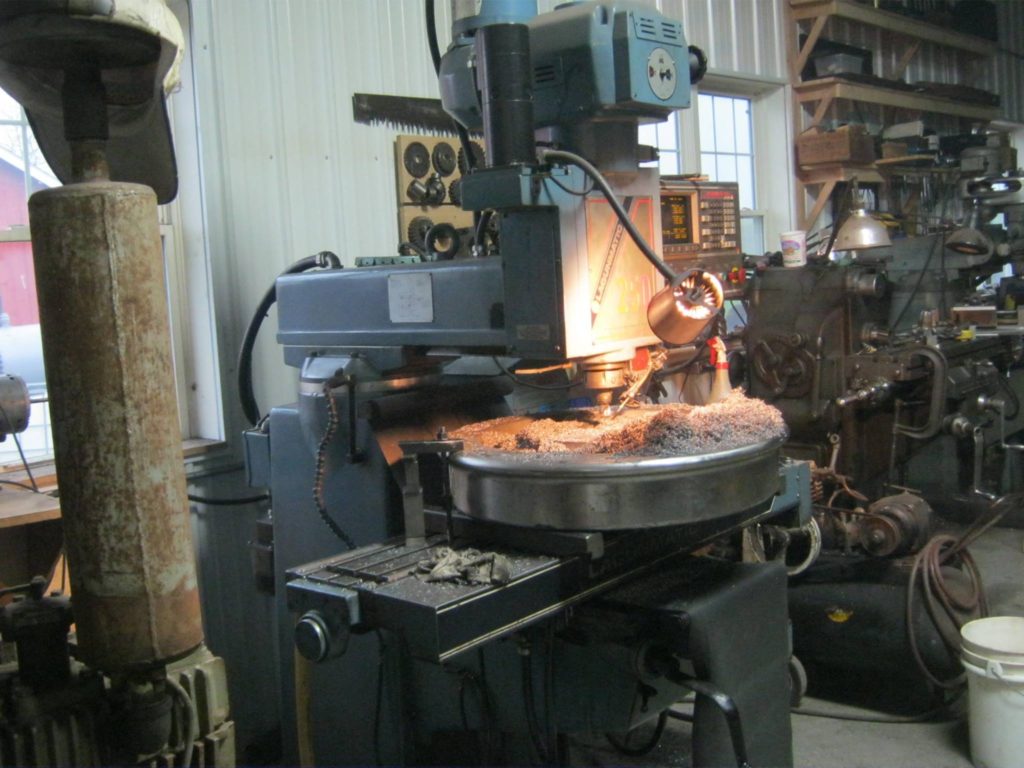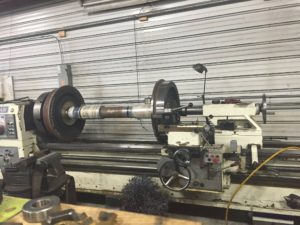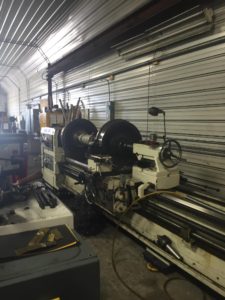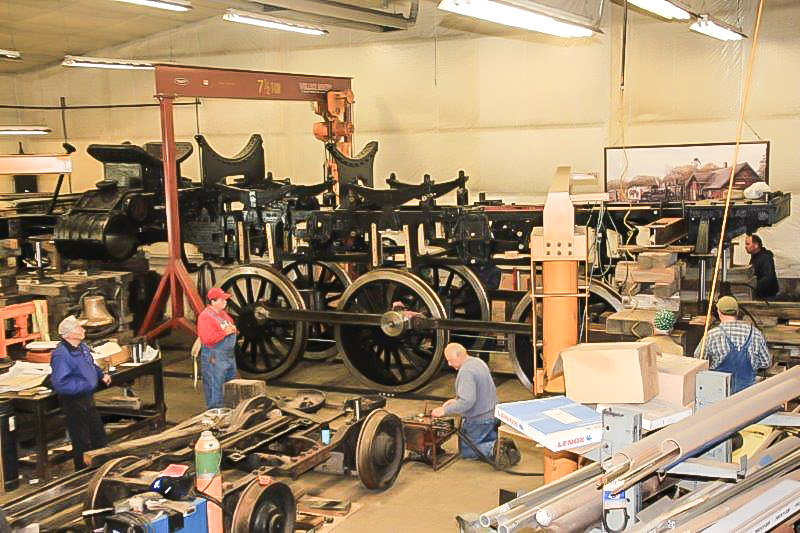A quick update on the Chicago & North Western #1385. Earlier this week, one of the front truck wheelsets was being turned on a lathe. Work on these wheels is being carried out by Harvey Diversified Trades. (Pictures via Harvey Diversified Trades LLC Facebook page). The job prompted the Harvey Diversified Trades Facebook page to write “I used to think this lathe was big until we put a locomotive axle and wheels on it.”

“Finished up the week machining on the front wheels for the 1385 steam locomotive for Mid-Continent Railroad Museum. Certainly kept the machine firmly on the floor….they are heavy.” — Harvey Diversified Trades Facebook
- C&NW 1385 pilot wheels on lathe.
- C&NW 1385 pilot wheels on lathe.
- C&NW 1385 pilot wheels on lathe.
Two of the four 28″ lead truck wheels (pictured) are being retained and machined to specification, while the other two wheels were worn enough to necessitate replacement with brand new wheels. The new wheels were produced at a forge in Pennsylvania and delivered to Milwaukee, WI to be pressed onto the axle by NRE Wheel Works.
Both wheelsets will return to SPEC Machine in Middleton, WI where they will be united with the front truck assembly which has been undergoing repair work there.












